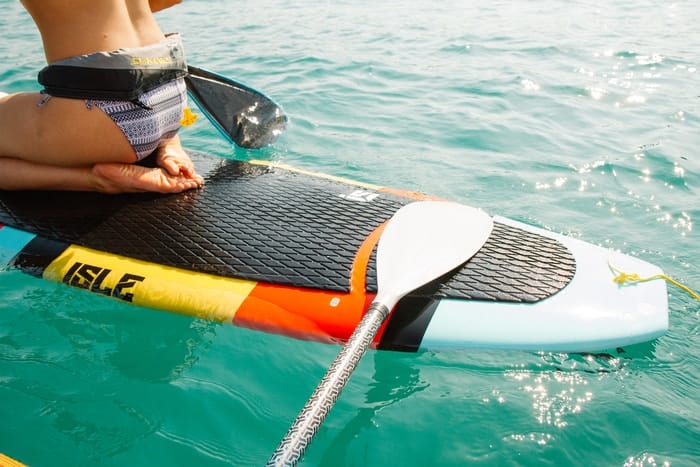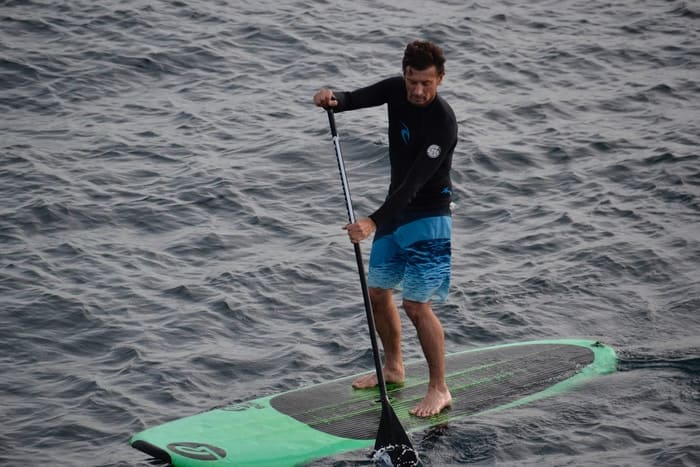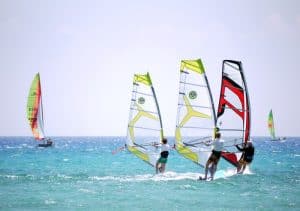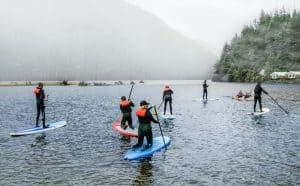Stand-up paddle boards, or SUPs, are a relatively new addition to the watersports world, and their popularity is growing fast. They offer a great workout and a lot of fun on the water. So what are SUPs and what are the different types?

SUPs are essentially large surfboards that you stand on and use a paddle to move yourself around. They can be used for surfing small waves, cruising along shorelines, or even racing. There are a few different types of SUPs available:
Racing Stand Up Paddle Boards
Racing stand up paddle boards, also known as longboards, are typically longer and narrower than surfing boards. They have a pointed nose and tapered rails that allow them to cut through the water with ease. They are also less buoyant than surfing boards, which makes them more difficult to balance on but gives them greater speed and performance.
Touring Stand Up Paddle Boards
Touring stand up paddle boards are designed for long-distance paddling and cruising. They’re typically wider and more stable than other types of boards, making them ideal for beginners or those looking to explore new areas. Many touring boards also come with built-in cargo racks, allowing you to carry supplies or equipment with you on your journey.
All Around Stand Up Paddle Boards
All around SUPs are typically around 11-12 feet long and 30 inches wide, which makes them stable and easy to maneuver. They can be used for flat water paddling, surfing, and even whitewater rafting. Additionally, they are often lighter weight than other types of SUPs, making them easier to store and transport.
Fun Outdoor Quiz
Surf Style Stand Up Paddle Boards
Surf-style boards are designed for those who want to surf the waves. The board is wider and longer than traditional surfboards, making it more stable in the water. If you’re looking for a board that will help you catch waves and ride them all the way to shore, a surf-style SUP board is perfect for you.

Inflatable Stand Up Paddle Boards
Inflatable stand up paddle boards, also known as iSUPs, have been growing in popularity for the past several years. These boards are perfect for beginner and experienced paddle boarders alike. They are easy to transport and set up and provide a great workout.
There are a few different types of inflatable stand up paddle boards on the market. The most popular type is the all-around board. This type of board is great for paddling in both flat water and waves. It is also stable and versatile, making it perfect for beginners.
Another type of inflatable stand up paddle board is the raceboard. This type of board is designed for speed and maneuverability. It is not as stable as the all-around board, so it is not recommended for beginners.
Different Types of Paddle Board Sizes
When it comes to paddle boarding, size does matter. The length and width of your SUP will determine how easy (or difficult) it is to paddle and how stable the board will be. Here are three different types of SUP sizes, along with a breakdown of what each one is best for:
Short SUPs
These boards are typically 10-11 feet long and around 28 inches wide. They’re great for surfing small waves and for those who want a more agile board. Because they’re narrower, short SUPs are also faster than other types of boards.
Mid-length SUPs
These boards are around 12 feet long and 30-32 inches wide. They’re perfect for all-around use, from flat water paddling to surfing small waves. They provide a good amount of stability without being too cumbersome or slow.
Long SUPs
These boards measure roughly 13-15 feet long and generally around 32-34 inches wide. They’re best for surfing big waves and going down the river, but they’re also a bit more difficult to control.
Conclusion
In conclusion, there are many different types of stand up paddle boards to choose from. Whether you are a beginner or an experienced paddle boarder, there is a board for you. Be sure to do your research and find the best board for your needs.









